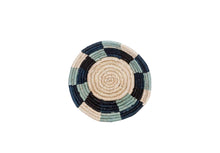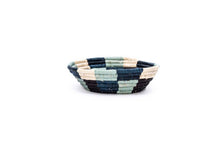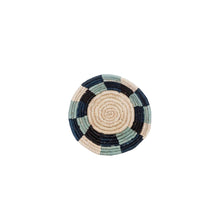5" Blue Night Catch All
Regular price
$18.00
Sale
5" Blue Night Catch All this beautiful catch all woven basket is perfect for just about anything! Use these stunning home decor in your bathroom for storage, organize your accessories on a dresser or for supplies in your home office.
Each of these breathtaking designs was handmade by a talented woman in rural Uganda. This gorgeous piece is a true work of art. There is a hand-stitched loop on the back of each basket for ready to hang wall art. They make beautiful decor accents on any tabletop or as eye-catching wall decor. We love them paired with other wall paintings and baskets.
These delicately textured and woven baskets were made by groups of women in intimate communities across Uganda in an ethical, fair trade environment. They use the raffia plant and banana fibers to weave them together. Made of the highest quality natural fibers in an ethical, fair trade environment.
A lovely idea if you are looking to give a personalized gift for a dinner party, birthdays, engagements or weddings.
Being handcrafted as with all artisan produced items, they will vary slightly in size and color. This is an inherent characteristic and it's uniqueness is desirable, not a defect.
MATERIAL: Woven Straw
ORIGIN: Uganda, Africa from a Fair Trade Weaving Collective
DIMENSIONS: 5" DIA x 1.5" H
FACTS & HISTORY: Traditional fibers used in basketry reflect the local habitat. They include illala palm, sisal leaves and fiber, raffia (African bamboo), fibrous tree and plant roots such as makenge, vines, leaves (banana and fan palm), cane, bark wood and papyrus.
Two types of vegetative fiber are normally used to make a coiled basket, one for the inner coil and one for the wrapping of the coils. For example, in Uganda and Rwanda, baskets are woven from raffia or papyrus wrapped and stitched around a coil of banana leaf stems. Grass is often used for the core of the coils.
Historically, baskets have been used for agricultural practices such as winnowing and sifting, the collecting and carrying of crops, as well as portage of produce to markets.
Not only does it continue to play an integral part in modern community life but it has evolved to a highly expressive contemporary art form.
African basketry is a dynamic craft, altered by social changes and shaped by both environmental and economic factors. Traditionally, shapes and weaves were determined largely by the uses for what the baskets were intended.
Nowadays, while the methods of basket making are still held in regard, the materials have significantly changed from natural fibers to include man-made creations like plastic, wire and recycled products.








